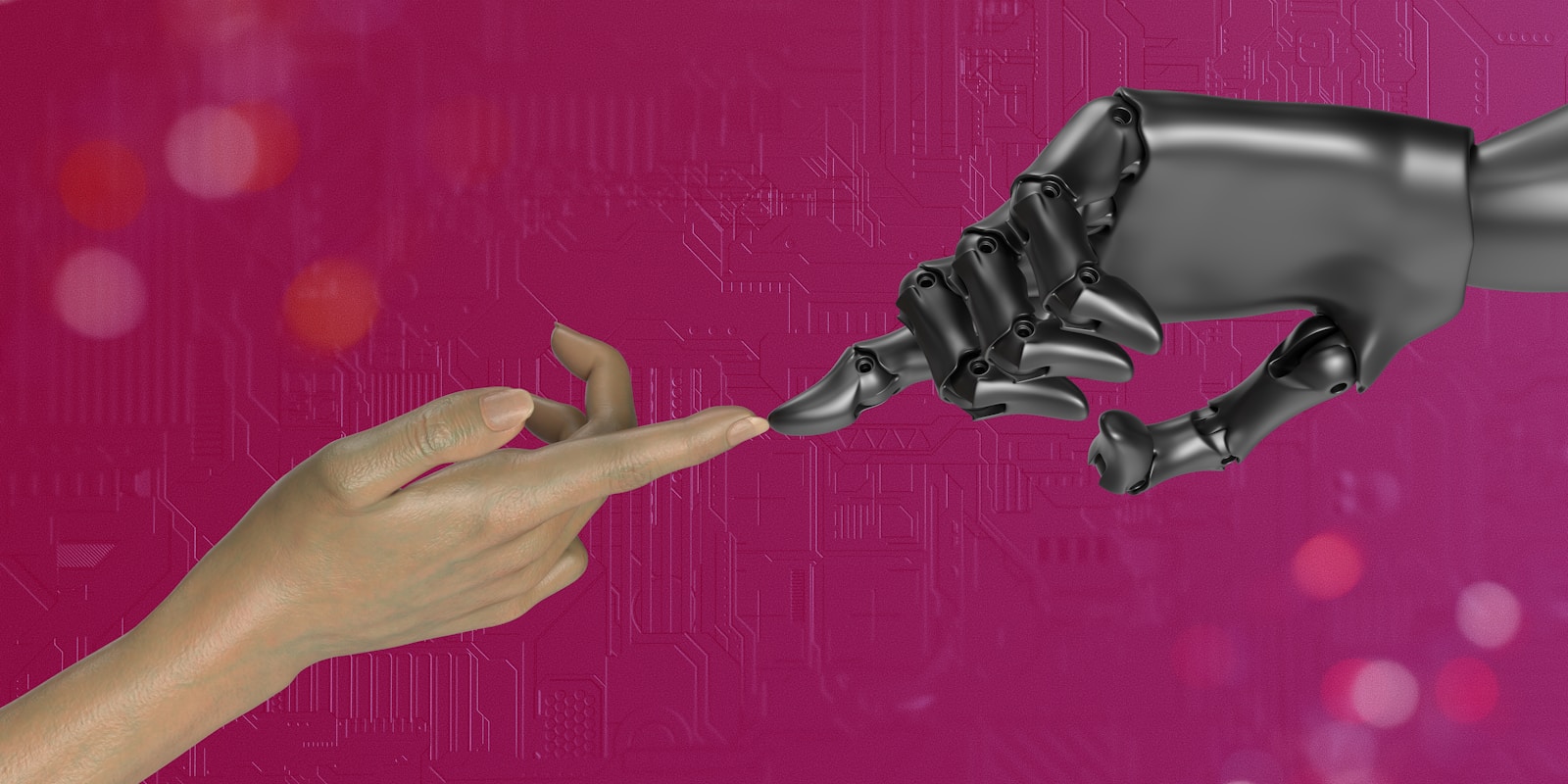The Future of Voice Automation: Revolutionizing Everyday Tasks
Welcome to the future of convenience and efficiency - Voice Automation Technology. In this blog post, we delve into the transformative power of voice automation and its impact on our daily lives. From simplifying everyday tasks to streamlining complex processes, voice automation has swiftly become an integral part of our modern world.
We will explore how voice automation technology is shaping various industries, discuss the advantages it offers in optimizing workflows, and address the challenges that organizations may face in integrating this cutting-edge technology. Join us as we take a glimpse into the future, highlighting emerging trends and innovations in voice automation systems that are set to redefine the way we interact with technology. Get ready to discover the game-changing potential of voice automation in revolutionizing everyday tasks

Introduction to Voice Automation Technology
Introduction to Voice Automation Technology
Imagine a world where you can control your home devices, schedule appointments, order groceries, or even draft emails, all with just the sound of your voice. Welcome to the realm of voice automation technology, a revolutionary advancement that is transforming the way we interact with our everyday tasks.
Voice automation technology utilizes speech recognition software to interpret and respond to verbal commands provided by users. This technology has rapidly gained popularity due to the convenience and efficiency it offers. By integrating voice automation into various devices and applications, users can perform tasks hands-free, saving time and effort.
One of the key benefits of voice automation is its accessibility. People with physical disabilities or those who struggle with traditional interfaces can now easily navigate and control devices using just their voice. This inclusivity has made voice automation a game-changer in enhancing the quality of life for many individuals.
Furthermore, voice automation has streamlined various industries, from customer service to healthcare. Businesses are leveraging this technology to provide faster and more personalized services to their customers. In healthcare, voice automation is being used to schedule appointments, provide medication reminders, and even offer medical assistance, improving patient care and overall efficiency.
As the technology continues to evolve, we can expect even more innovative applications of voice automation in the future. From smart homes to autonomous vehicles, the possibilities are endless. The future of voice automation is bright, promising a more connected and efficient world where tasks are completed effortlessly with just a simple command
The Impact of Voice Automation on Daily Activities
The Impact of Voice Automation on Daily Activities
Voice automation technology has rapidly transformed the way we interact with our devices, creating a seamless and efficient experience in completing daily activities. From setting reminders and controlling smart home devices to ordering groceries and checking the weather forecast, the impact of voice automation on daily tasks cannot be understated.
One key area where voice automation excels is in providing hands-free interaction, eliminating the need to manually input commands or navigate through screens. This not only streamlines tasks but also enhances accessibility for individuals with mobility issues or disabilities, empowering them to independently manage their daily activities.
Moreover, voice automation has significantly improved efficiency in various aspects of our lives. Whether it's scheduling appointments, sending text messages, or even composing emails, the ability to simply dictate commands has revolutionized how we approach these tasks. By minimizing the time and effort required to complete routine activities, voice automation has given us the gift of reclaiming precious moments in our busy schedules.
Additionally, voice automation has played a pivotal role in enhancing productivity and multitasking capabilities. Now, individuals can easily juggle multiple tasks simultaneously, such as cooking dinner while adding items to their shopping list or playing music while setting up a meeting reminder. This hands-free approach not only boosts efficiency but also allows for a more seamless integration of technology into our daily routines.
Furthermore, voice automation has extended its influence beyond personal tasks to professional settings, where it has become a valuable tool in increasing workplace productivity. From transcribing meeting notes to managing calendars and coordinating tasks, voice automation enables professionals to focus on high-value activities while delegating repetitive tasks to digital assistants.
In conclusion, the impact of voice automation on daily activities is profound and transformative. By integrating natural language processing and AI capabilities, voice automation has revolutionized how we engage with technology, making everyday tasks more convenient, efficient, and accessible than ever before. Embracing this innovative technology not only enhances our daily routines but also sets the stage for a more connected and automated future
Advantages of Implementing Voice Automation in Various Industries
Advantages of Implementing Voice Automation in Various Industries
Voice automation has emerged as a groundbreaking technology that is reshaping the way we interact with devices and complete everyday tasks. Across various industries, the advantages of implementing voice automation are becoming increasingly apparent, offering a wide range of benefits that enhance efficiency, productivity, and user experience.
In the customer service sector, voice automation has revolutionized the way businesses interact with their clients. Automated voice systems can handle a high volume of customer queries and requests, leading to shorter response times and improved customer satisfaction levels. By integrating voice recognition technology, companies can streamline their customer service processes and provide more personalized and efficient support to their customers.
The healthcare industry is another sector that has seen significant advancements through the implementation of voice automation. Voice-activated devices and applications can assist healthcare professionals in accessing patient records, scheduling appointments, and even dictating notes, allowing for more accurate and timely patient care. Voice automation not only saves time for healthcare providers but also enhances the overall quality of patient interactions and treatment outcomes.
Moreover, in the manufacturing and logistics industries, voice automation plays a crucial role in optimizing warehouse operations and improving inventory management processes. By using voice-activated devices for order picking, inventory tracking, and other logistical tasks, companies can increase operational efficiency, reduce errors, and minimize costly downtime. This results in a more streamlined supply chain and greater overall productivity.
The benefits of voice automation are not limited to specific industries; rather, they have the potential to transform the way we work and interact across various sectors. As technology continues to advance, the integration of voice automation is likely to become even more prevalent, offering a host of advantages that drive innovation, improve processes, and enhance the overall user experience. By embracing voice automation, businesses can stay ahead of the curve and unlock new opportunities for growth and success in the rapidly evolving digital landscape

Overcoming Challenges in Voice Automation Integration
Overcoming Challenges in Voice Automation Integration
Voice automation has undoubtedly transformed the way we interact with technology, making everyday tasks more convenient and efficient. From setting reminders and controlling smart home devices to making hands-free calls and sending messages, voice assistants like Siri, Alexa, and Google Assistant have become an integral part of our daily lives. However, as the adoption of voice automation continues to rise, businesses and developers are facing several challenges when it comes to integrating this technology seamlessly.
One of the key challenges in voice automation integration is ensuring compatibility across different platforms and devices. With a plethora of voice-activated devices available in the market, developers often struggle to create applications that work seamlessly across all platforms. This fragmentation can lead to inconsistencies in user experience and functionality, hindering the widespread adoption of voice automation technology.
Another challenge is the issue of privacy and security. As more personal information is shared through voice commands, concerns about data privacy and security have become more prevalent. Users are becoming increasingly wary of the potential risks associated with voice automation, such as unauthorized access to sensitive data or recordings. Addressing these concerns and implementing robust security measures is crucial to building trust among users and ensuring the long-term success of voice automation technology.
Moreover, the accuracy and reliability of voice recognition technology remain a challenge. While significant advancements have been made in natural language processing and speech recognition, there are still instances where voice assistants misinterpret commands or fail to recognize accents or dialects accurately. Enhancing the accuracy of voice recognition systems through machine learning algorithms and continuous training is essential to improving user experience and increasing the adoption of voice automation technology.
Additionally, integrating voice automation into existing applications and workflows can present technical challenges for developers. Retrofitting voice capabilities into legacy systems or designing new applications with voice-first interfaces requires a deep understanding of both the technology and user behavior. Developers need to overcome technical constraints and design intuitive user interfaces that cater to voice commands while offering a seamless user experience.
In conclusion, while voice automation has the potential to revolutionize everyday tasks and enhance user experiences, overcoming the challenges in integration is crucial for unlocking its full potential. By addressing issues such as compatibility, privacy and security, accuracy, and technical barriers, businesses and developers can create innovative voice-enabled solutions that streamline workflows, improve productivity, and provide users with a seamless and intuitive interface for interacting with technology
Looking Ahead: Trends and Innovations in Voice Automation Systems
Looking Ahead: Trends and Innovations in Voice Automation Systems
Voice automation technology has rapidly transformed the way we interact with our devices and surroundings, and the future holds even more exciting advancements in this field. As we look ahead, several trends and innovations are set to revolutionize everyday tasks through voice automation systems.
One key trend to watch for is the increasing integration of voice assistants into various smart devices and IoT (Internet of Things) technologies. From smart thermostats to connected cars, voice automation is poised to become the primary mode of interaction, making tasks as simple as adjusting the temperature or navigating traffic a hands-free experience.
Another promising development is the expansion of voice recognition capabilities, enabling more natural and seamless interactions between users and devices. With improvements in AI and machine learning, voice automation systems are becoming increasingly adept at understanding context, accents, and even emotions, enhancing the overall user experience.
Furthermore, the rise of voice commerce is set to redefine the way we shop and make purchases. Voice-activated shopping assistants, integrated into smart speakers and other devices, will make ordering groceries, booking services, and shopping online as easy as uttering a command.
Looking ahead, advancements in voice biometrics hold the potential to enhance security and personalization in voice automation systems. By leveraging unique vocal characteristics for authentication, users can enjoy a more secure and personalized experience across various applications and devices.
Overall, the future of voice automation is bright, with trends and innovations poised to streamline everyday tasks, enhance convenience, and revolutionize the way we interact with technology. As this technology continues to evolve, we can expect to see even more exciting possibilities unfold in the realm of voice automation systems
Conclusion
In conclusion, the future of voice automation holds immense potential in revolutionizing everyday tasks across industries. We have explored how this groundbreaking technology is enhancing convenience, efficiency, and productivity in our daily lives. By streamlining workflows and simplifying complex processes, voice automation has become a game-changer in our modern world.
Throughout this blog post, we have highlighted the transformative power of voice automation, its impact on various industries, and the advantages it offers in optimizing tasks. Despite the challenges organizations may face in adopting this technology, the potential for innovation and efficiency is undeniable.
As we look ahead, emerging trends and innovations in voice automation systems promise to redefine the way we interact with technology, further enhancing our experiences and shaping the future of automation. Stay tuned for the evolution of voice automation as it continues to revolutionize everyday tasks and set new standards for convenience and efficiency